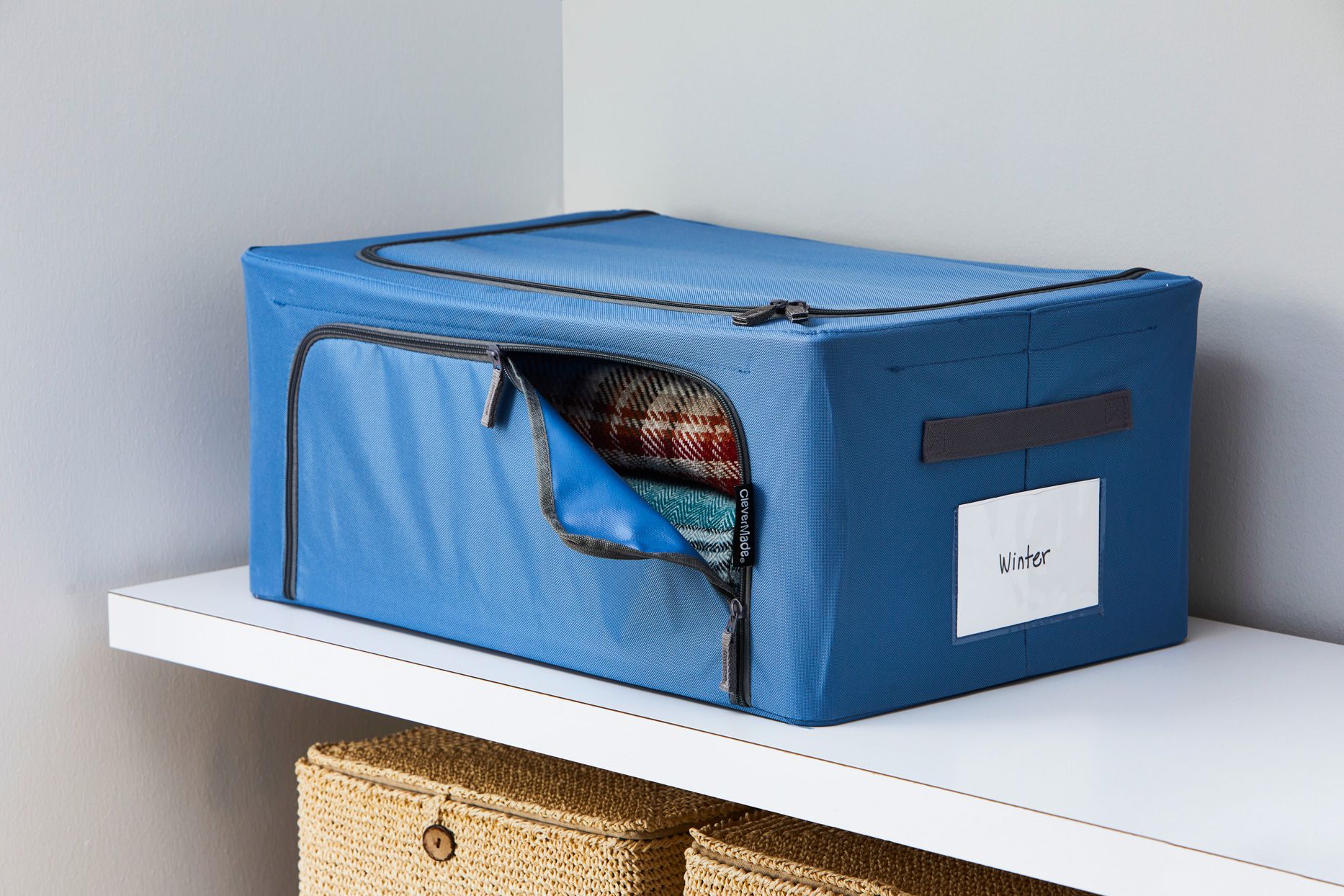

Articles
How To Store Blankets To Save Space
Modified: January 19, 2024
Learn how to store blankets efficiently to maximize space in your home. Discover practical articles and tips to save space and keep your blankets organized.
(Many of the links in this article redirect to a specific reviewed product. Your purchase of these products through affiliate links helps to generate commission for Storables.com, at no extra cost. Learn more)
Introduction
Blankets are not only cozy and comforting, but they also come in handy during chilly nights or when you need an extra layer of warmth. However, storing blankets can sometimes be a challenge, especially if you’re tight on space. Proper storage not only helps to keep your blankets organized but also ensures their longevity.
In this article, we will explore various storage methods and techniques to help you save space while keeping your blankets in excellent condition. From vacuum-seal storage bags to under-bed storage options, there are plenty of solutions that will allow you to maximize your storage space and keep your blankets easily accessible.
Before diving into the different storage methods, it’s essential to evaluate your blankets. Take a moment to assess the size, material, and condition of each blanket. This evaluation will help determine the best storage method for each blanket, as well as identify any specific care requirements. Once you have a good understanding of your blankets, you can proceed with the most suitable storage solution.
So, whether you have extra blankets for guests, seasonal blankets, or blankets that hold sentimental value, let’s explore the various storage options available to help you save space without compromising the quality of your blankets.
Key Takeaways:
- Maximize space and preserve blanket quality with vacuum-seal bags, space-saving bins, and under-bed storage. Evaluate each blanket’s size, material, and condition for the best storage method.
- Long-term blanket storage requires cleanliness, breathable containers, and protection from pests. Rotate and check periodically to ensure blankets remain in excellent condition.
Read more: How To Store Blankets Without A Closet
Evaluate Your Blankets
Before you embark on storing your blankets, it’s crucial to evaluate each one individually. This assessment will help guide you in choosing the most appropriate storage method and ensure that your blankets remain in optimal condition throughout the storage period.
Begin by examining the size of each blanket. Are they standard throw blankets or oversized bedding blankets? This information will help you determine the amount of storage space required for each blanket.
Next, take note of the material composition of your blankets. Different materials, such as cotton, wool, or synthetic blends, may have specific care instructions and storage recommendations. For example, wool blankets are best stored in breathable containers to prevent moisture buildup, while cotton blankets may be more forgiving in terms of storage requirements.
While evaluating your blankets, also check for any signs of damage or stains. It’s advisable to address any cleaning or repair needs before storing your blankets to prevent further deterioration during storage. If there are blankets that require professional cleaning or repairs, it’s best to take care of these tasks before proceeding with storage.
Last but not least, consider the sentimental value of your blankets. Are there any heirloom or cherished blankets that require extra care? These blankets may need specific storage methods, such as acid-free containers or protective covers, to safeguard their sentimental value.
By taking the time to evaluate each blanket, you can ensure that you choose the most suitable storage method for each one. This evaluation process will not only help you save space but also preserve the quality and longevity of your blankets for years to come.
Vacuum-Seal Storage Bags
Vacuum-seal storage bags are a fantastic option for saving space when storing blankets. These bags compress the blankets, removing excess air and creating a compact package that can easily fit into small storage spaces.
To use vacuum-seal storage bags, start by folding your blankets as neatly as possible. This minimizes wrinkles and allows for a more efficient packing process. Place the folded blankets into the storage bag, making sure not to overstuff it. Overfilling the bag can lead to difficulty in removing the air and may cause damage to the bag.
Once the blankets are in the bag, seal the opening securely. Many vacuum-seal storage bags have a zip closure that can be sealed with a slider or by pressing it firmly shut. Make sure the seal is tight to prevent any air from entering the bag.
After sealing the bag, locate the valve or opening designed for removing the air. Depending on the brand, the method for removing air may vary. Some bags require a vacuum cleaner attachment, while others may use a handheld pump provided with the bags. Follow the instructions provided with your specific storage bags to remove the air effectively.
Once all the excess air has been removed, the bag will shrink, compressing the blankets inside. This significantly reduces the volume of the blankets, allowing you to store them in smaller spaces. The vacuum-sealed bags also provide protection against dust, dirt, and moisture, keeping your blankets clean and dry during storage.
It’s important to note that vacuum-seal storage bags may not be suitable for all types of blankets. Delicate materials, such as antique or handmade blankets, may be too fragile to withstand the compression process. Additionally, vacuum-sealed bags may not be the best choice for down-filled or padded blankets, as the compression can affect their loft and insulation properties.
When using vacuum-seal storage bags, it’s essential to handle them with care. Avoid sharp objects or rough handling that could puncture the bag and compromise the seal. If stored properly, blankets stored in vacuum-sealed bags will remain protected and compact until they are needed again.
Space-Saving Storage Bins
If you prefer a more accessible storage option that doesn’t require vacuum sealing, space-saving storage bins are a great choice. These bins provide a convenient solution for storing blankets while keeping them easily accessible and protected from dust and pests.
When selecting storage bins, opt for clear containers that allow you to see the contents without having to open each bin. This makes it easier to locate specific blankets without rummaging through multiple bins.
To maximize space within the bins, utilize efficient folding techniques. Start by folding the blankets into a rectangle shape, making sure to smooth out any wrinkles. Then, roll the blankets tightly, starting from one end. This rolling technique helps to minimize the overall size of the blankets and makes them easier to stack within the storage bins.
Place the rolled blankets vertically into the storage bin, arranging them in a way that maximizes the use of available space. You can create dividers within the bin by using additional rolled-up blankets or using small storage containers to separate different blankets. This helps to keep the blankets organized and prevents them from becoming too tightly packed.
Label each storage bin with the contents or categories of blankets inside. This makes it easier to locate specific blankets when needed, especially if you have multiple storage bins. You can use adhesive labels, label holders, or even write directly on the bin using a permanent marker.
When stacking the storage bins, be mindful of the weight distribution to prevent any damage or collapse. Place the heavier bins at the bottom and keep the lighter ones on top. Additionally, avoid stacking too many bins on top of each other to avoid instability. If possible, create a stable and secure storage system by utilizing shelving units or racks.
Space-saving storage bins are a versatile option for storing blankets, as they allow for easy access and organization. They can be kept in closets, under beds, or in any storage area to maximize space while keeping your blankets neatly stored and protected.
Rolling and Securing Techniques
When it comes to storing blankets, rolling and securing them can be an effective space-saving method. This technique allows you to neatly store your blankets while minimizing the amount of space they occupy.
To begin, clear a flat surface such as a bed or a large table. Lay the blanket flat on the surface and smooth out any wrinkles or folds. Start rolling the blanket tightly from one end to the other. The tighter you roll it, the more compact it will become, allowing for easier storage.
Once the blanket is rolled, secure it with some form of tie or fastener. This can be a ribbon, a piece of twine, or even a stretchy band. Make sure to secure it tightly to keep the blanket in place and prevent it from unraveling during storage.
If you have multiple blankets that you’re storing together, consider rolling them individually before securing them as a group. This allows for easier access to specific blankets without having to unroll the entire stack.
To further save space, you can place the rolled and secured blankets into a fabric bag or a large pillowcase. This not only protects the blankets from dust and dirt but also keeps them contained in one place.
When it comes to storing these rolled blankets, consider utilizing vertical storage options. For example, you can stack them vertically in a closet corner or even store them within a decorative basket. This not only saves space but also adds a touch of organization and aesthetic appeal to your storage area.
Another option is to store the rolled blankets inside furniture with built-in storage compartments. For example, ottomans or benches with lift-up lids can serve as dual-purpose furniture, providing seating and storage for your blankets at the same time.
When placing the rolled blankets in any storage area, it’s essential to ensure that they are kept in a dry and cool environment. This helps prevent moisture buildup and the growth of mildew or mold.
By utilizing rolling and securing techniques, you can save valuable storage space while keeping your blankets neat, accessible, and well-preserved for whenever you need them.
Consider using vacuum storage bags to compress and store blankets, saving space and protecting them from dust and pests.
Read more: How To Store Blankets
Utilizing Under-Bed Storage
One often overlooked storage space for blankets is underneath the bed. This area provides a convenient and hidden storage solution, allowing you to maximize space while keeping your blankets easily accessible.
To make the most of under-bed storage, start by measuring the height of your bed frame. This will help you determine the height limitations for the storage containers or bags that you plan to use.
There are several options available when it comes to under-bed storage containers. You can choose from plastic bins, fabric storage bags, or even specialized under-bed storage boxes with built-in wheels for easy access.
When selecting the storage containers, consider ones with clear lids or windows. This will make it easier to identify the blankets stored inside without having to open each container.
Prior to storing your blankets, ensure they are folded, rolled, or neatly stacked. This will help optimize space within the storage containers and make it easier to retrieve specific blankets when needed.
Once your blankets are ready, slide them under the bed, making sure they fit snugly within the storage containers. If using bags, ensure they are properly sealed and secured to prevent dust or moisture from entering.
When storing blankets under the bed, it’s important to keep in mind the ventilation of the space. To avoid any potential musty odors, periodically rotate and check the blankets, allowing them to receive some air circulation.
Another tip for utilizing under-bed storage effectively is to categorize your blankets. You can store blankets of similar types together, such as summer blankets, winter blankets, or guest blankets. This will make it easier to locate the appropriate blankets for each season or occasion.
If your bed frame does not provide enough clearance for larger storage containers, consider using vacuum-seal storage bags. These can be placed directly on the floor or on top of a flat storage bin, reducing the overall height while still maximizing storage space.
Utilizing under-bed storage allows you to free up valuable closet or shelf space while keeping your blankets conveniently tucked away. It’s a practical and efficient solution for storing a large quantity of blankets in a compact and hidden area.
Hanging Blanket Storage
If you have limited floor or closet space, hanging blanket storage can be an excellent solution. This method not only saves space but also keeps your blankets easily accessible and neatly displayed.
To begin, evaluate your available hanging space. This can include clothing rods in your closet, a garment rack, or even sturdy hooks mounted on the wall. Ensure that the chosen area can support the weight of your blankets.
There are a few different approaches to hanging blanket storage, depending on the size, weight, and type of blankets you have.
For lightweight blankets such as throws or smaller blankets, consider using hangers with clips or clothespins. Fold the blankets neatly and attach them to the hangers by clipping them in place. Make sure the blankets are evenly distributed and not too tightly pinched to avoid creasing or damaging the fabric.
If you have heavier blankets or larger bedding blankets, you may need to use sturdy hangers with hooks or loops. Fold the blankets neatly and drape them over the hanger, making sure they hang evenly. Depending on the type of hanger, you may need to use additional hooks or loops to keep the blankets secure.
When hanging blankets, it’s important to provide enough space between them to prevent wrinkles and allow for air circulation. Avoid overcrowding the hangers, as this can lead to creases and may make it challenging to access individual blankets.
To keep your blankets protected and dust-free, you can use garment bags or large pillowcases. Slip the blankets into the bags or cases before hanging them. This will help to keep the blankets clean and prevent any dust buildup over time.
If you prefer a more decorative approach, you can hang your blankets as wall tapestries. This works well with larger, decorative blankets that have intricate designs or patterns. Simply hang them on a wall-mounted rod or use decorative wall hooks to create an eye-catching display.
Hanging blanket storage not only saves space but also adds a touch of visual appeal to your storage area. It allows you to showcase your blankets while keeping them easily accessible whenever you need that extra layer of warmth or comfort.
Fold and Stack Method
The fold and stack method is a classic approach to storing blankets that works well for those with ample shelf or closet space. This method allows you to neatly organize your blankets while keeping them easily accessible.
To start, begin by folding your blankets. Lay the blanket flat on a clean surface, such as a bed or a table. Smooth out any wrinkles and ensure the edges are even.
For smaller blankets, such as throws or baby blankets, you can opt for a simple square fold. Fold the blanket in half vertically, matching the edges together. Then, fold it in half horizontally to create a smaller square. This results in a compact folded blanket that can easily be stacked.
For larger bedding blankets, start by folding the blanket in half lengthwise. Then, fold it in half again, bringing the bottom edge up to meet the top. This creates a narrower rectangular shape that can be stacked more efficiently.
As you fold and stack your blankets, aim for uniformity. Folding them to a similar size and shape will make it easier to stack them neatly and maximize your storage space.
Once folded, stack the blankets on top of each other, making sure they are stable and balanced. If you have different types of blankets, consider separating them into different stacks or using dividers, such as folded towels or small storage containers, to keep them organized.
If you have open shelves or cubbies, you can stack the folded blankets directly on the shelves. Make sure to leave enough space between each stack to prevent them from toppling over. If you prefer, you can use storage bins or fabric boxes to keep the stacks contained and protected.
Label each stack or container to easily identify the contents. This is especially helpful if you have various types of blankets or want to differentiate between different seasons or sizes.
When storing the folded and stacked blankets, keep them in a dry and cool environment to prevent any moisture or mildew issues. Avoid placing them in direct sunlight, as prolonged exposure can fade the colors and damage the fabric.
The fold and stack method is a straightforward and efficient way to store blankets. It not only keeps your blankets organized but also provides easy access whenever you need to grab a blanket for warmth or comfort.
Tips for Long-Term Storage
Proper long-term storage of blankets is crucial to ensure their longevity and keep them in excellent condition. Here are some helpful tips to consider when storing your blankets for an extended period:
- Clean and dry: Before storing your blankets, ensure they are clean and completely dry. Any dirt, stains, or moisture left on the blankets can lead to mold, mildew, or fabric damage during storage. Follow the care instructions for each blanket and clean them thoroughly if necessary.
- Use breathable containers: Opt for storage containers or bags made from breathable materials, such as cotton or fabric, rather than airtight plastic. This allows for proper ventilation and helps prevent the build-up of moisture or odors.
- Avoid direct sunlight: Store your blankets in a location away from direct sunlight. Prolonged exposure to sunlight can cause fading and discoloration, particularly for blankets made from natural fibers.
- Safeguard against pests: Take measures to protect your blankets from pests such as moths or dust mites. You can use natural moth repellents, such as cedar chips or lavender sachets, or consider using storage containers with airtight lids to keep out unwanted critters.
- Rotate periodically: If you have multiple blankets in storage, it’s a good idea to rotate them periodically. This helps prevent any permanent creases or wear in one specific spot and ensures that all blankets receive some exposure to air and light.
- Avoid excessive weight: When stacking blankets, try to avoid placing too much weight on top of each other. Excessive pressure can lead to creases or compression of the fabric over time. If necessary, use dividers or storage containers to prevent heavy items from pressing down on the blankets.
- Keep in a cool and dry environment: Store your blankets in a cool, dry, and well-ventilated area. Avoid areas prone to humidity, such as basements or attics, as excessive moisture can lead to mold or mildew growth.
- Label and document: Label your storage containers or bags with the contents or any specific instructions, such as “fragile” or “delicate.” Additionally, consider documenting the stored blankets for easy retrieval and reference in the future.
- Check periodically: Every few months, check on your stored blankets to ensure they remain in good condition. This is especially important in case of any potential issues, such as pests or humidity. If necessary, take appropriate actions to address any concerns.
- Avoid using plastic covers: While it may be tempting to use plastic covers to protect your blankets, they can trap moisture and lead to condensation, causing damage to the fabric. Stick to breathable storage containers or fabric bags instead.
By following these tips, you can ensure that your blankets remain in excellent condition during long-term storage. Proper care and attention will help preserve the quality of your blankets, allowing you to enjoy their warmth and comfort for years to come.
Read more: How To Store Jeans To Save Space
Conclusion
Storing blankets effectively is essential for optimizing space and preserving the quality of your blankets. Whether you have limited storage options or an abundance of space, there are various methods that can help you save space and keep your blankets neat and easily accessible.
From vacuum-seal storage bags to space-saving storage bins, rolling and securing techniques to utilizing under-bed storage, hanging blanket storage to the fold and stack method, there are plenty of options to suit your needs and available space.
Before storing your blankets, take the time to evaluate each one individually. Consider the size, material, condition, and sentimental value of each blanket to determine the best storage method and any special care requirements.
Remember to clean and dry your blankets before storage to prevent any moisture, dirt, or odors from causing damage. Use breathable containers or bags to allow for proper ventilation and avoid direct sunlight to prevent fading.
Additionally, take precautions against pests and periodically rotate and check your stored blankets to ensure their well-being. Labeling and documenting the contents of storage containers or bags will make it easier to find specific blankets in the future.
By implementing these tips and methods, you can keep your blankets organized, protected, and in excellent condition during both short-term and long-term storage. The proper care and storage of your blankets will ensure that they can continue to provide you with warmth, comfort, and a cozy atmosphere for years to come.
Frequently Asked Questions about How To Store Blankets To Save Space
Was this page helpful?
At Storables.com, we guarantee accurate and reliable information. Our content, validated by Expert Board Contributors, is crafted following stringent Editorial Policies. We're committed to providing you with well-researched, expert-backed insights for all your informational needs.



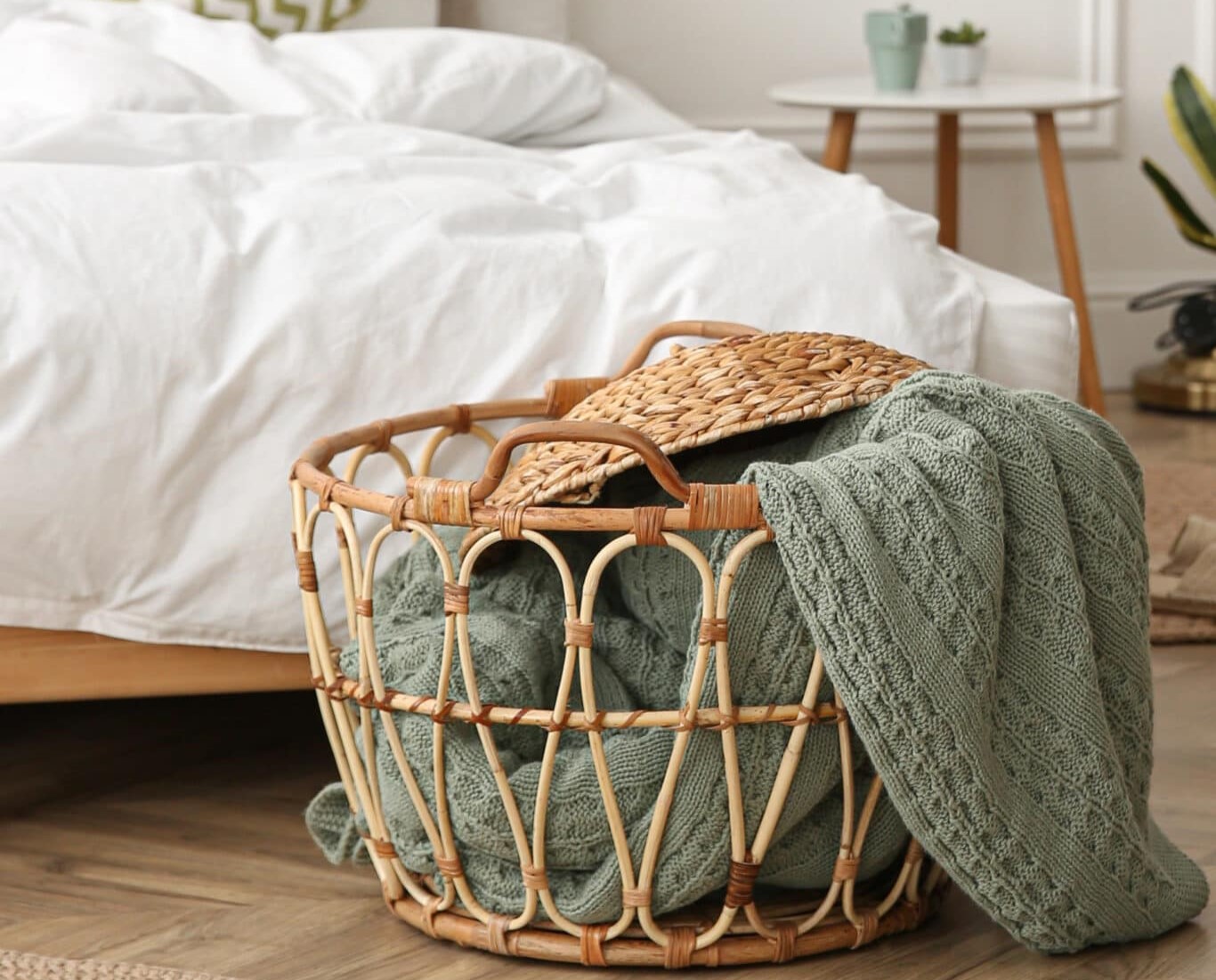

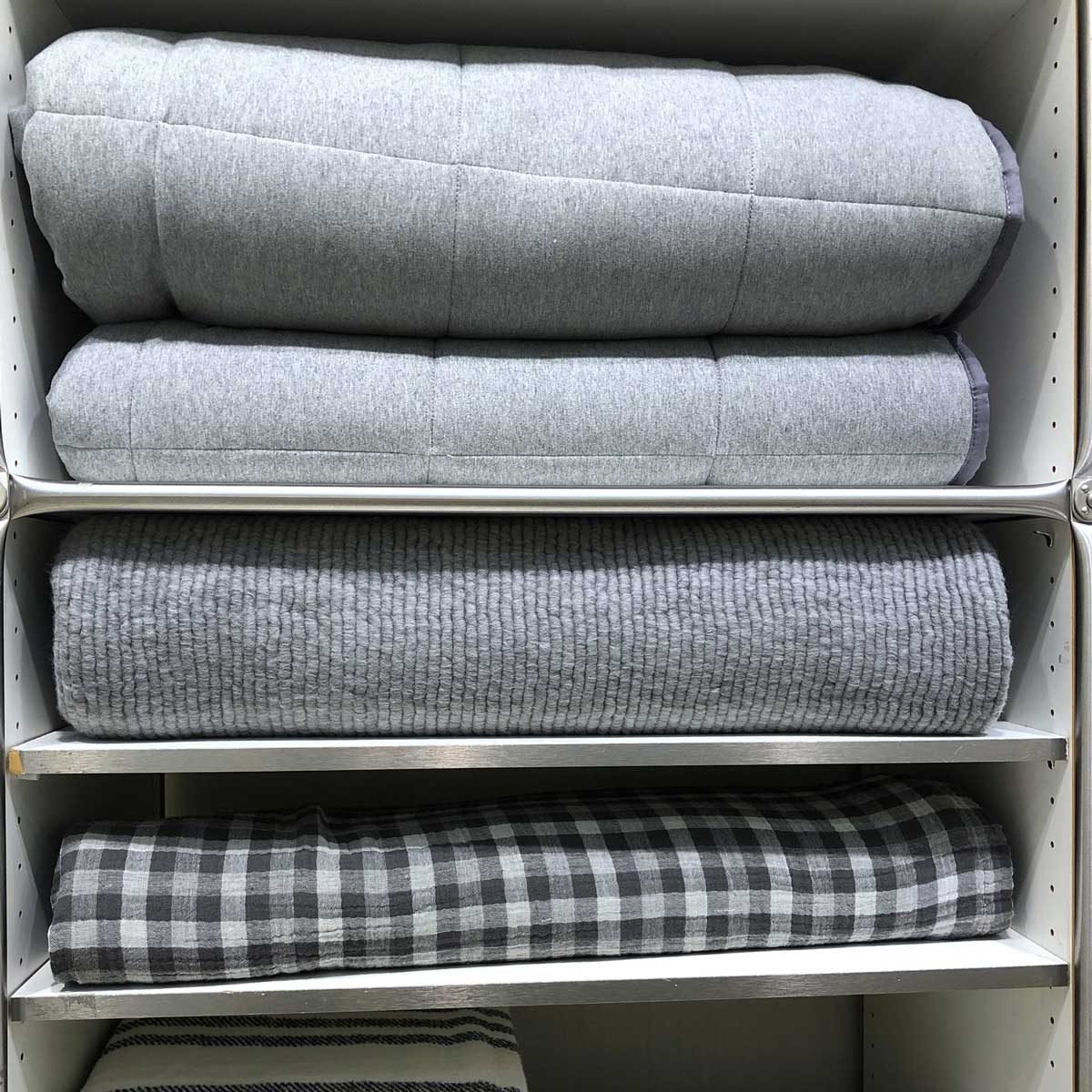



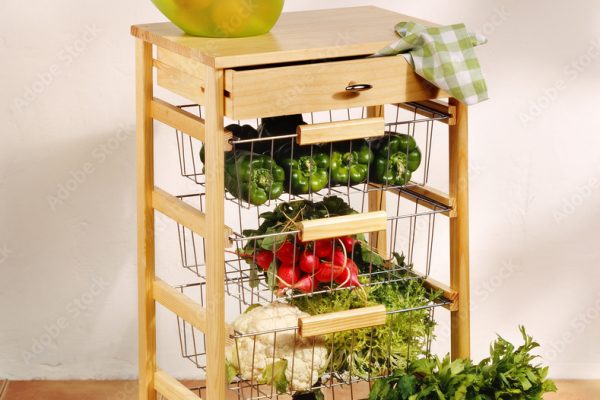
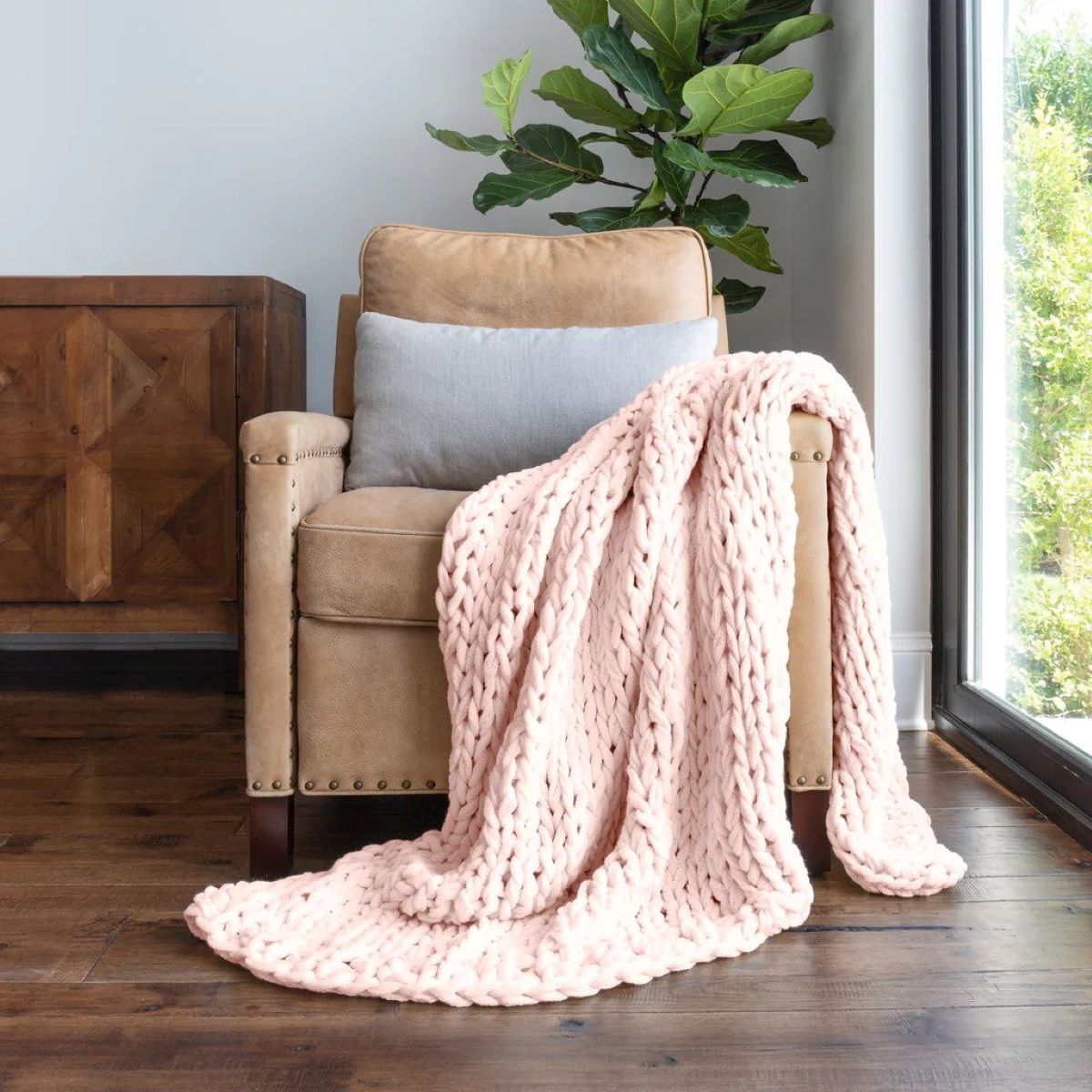
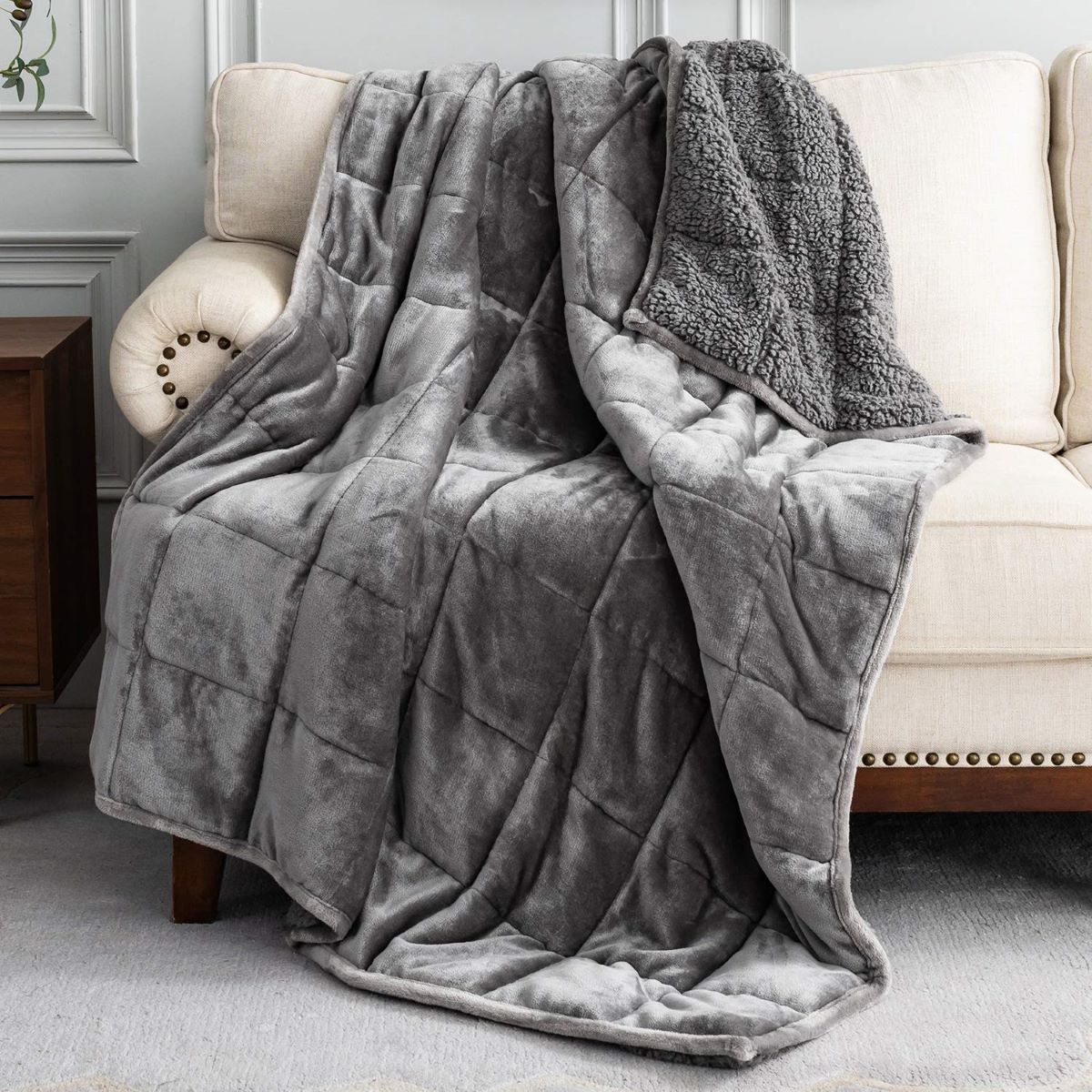


0 thoughts on “How To Store Blankets To Save Space”